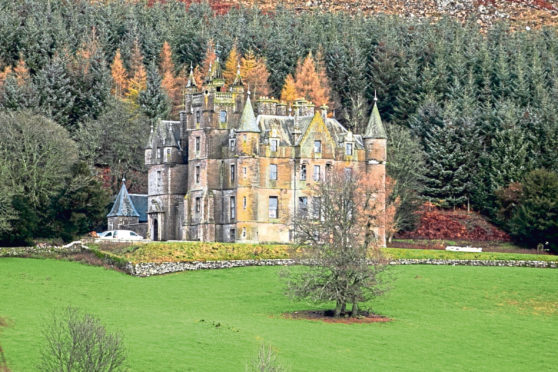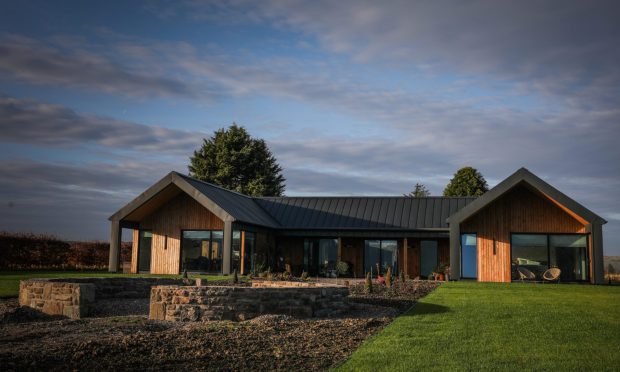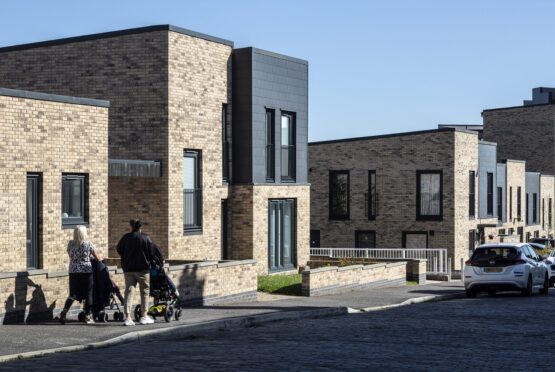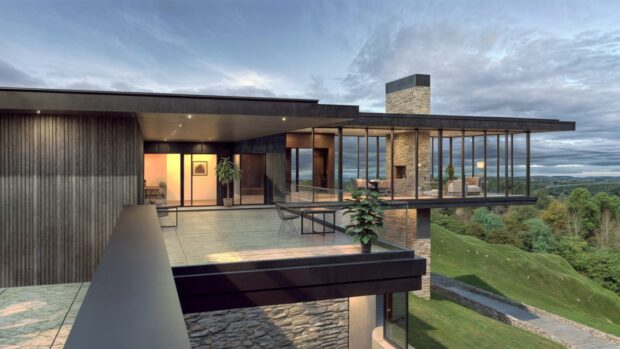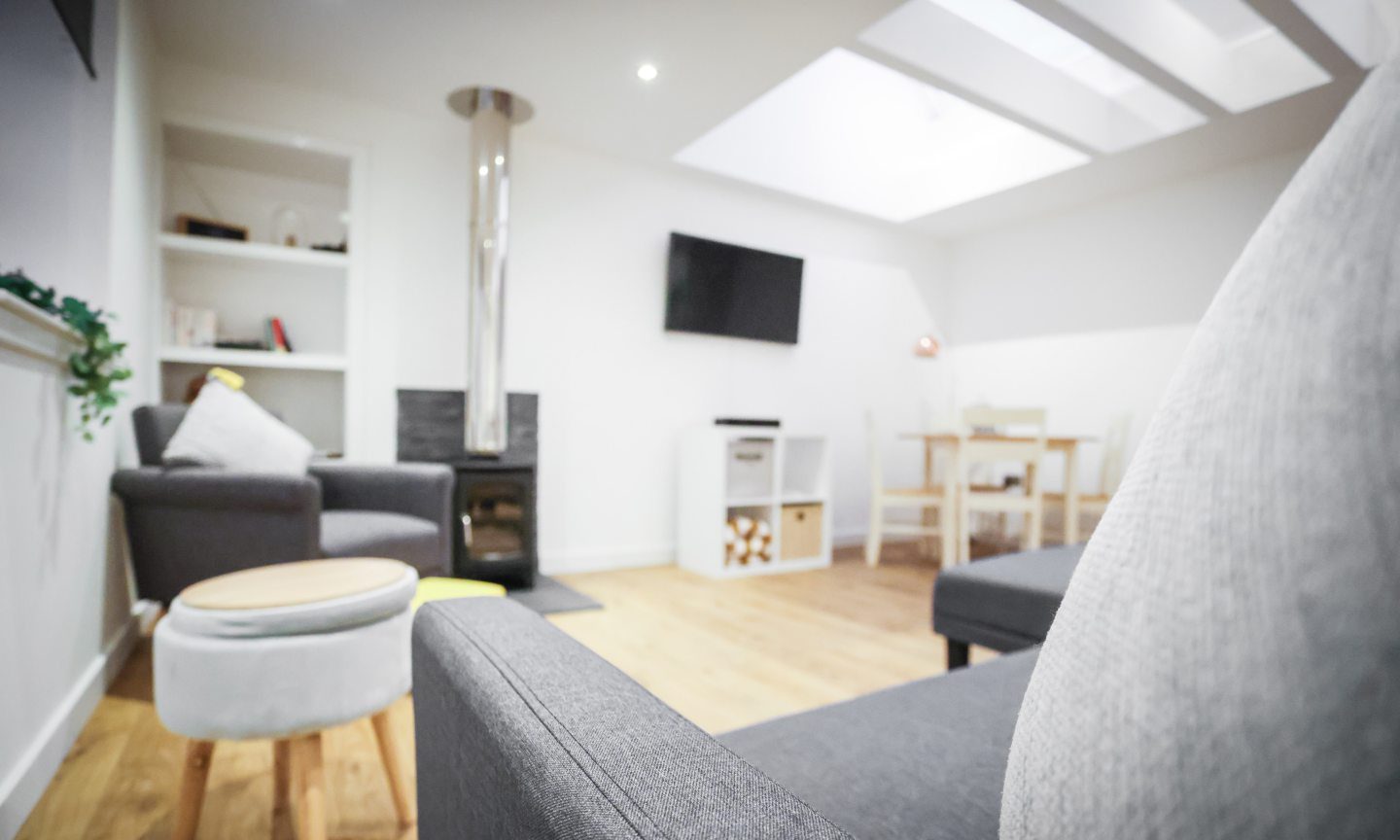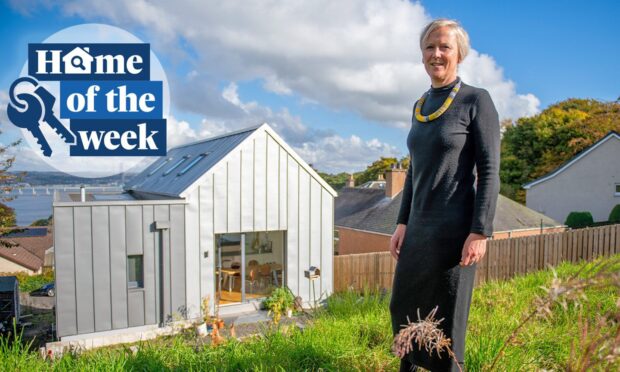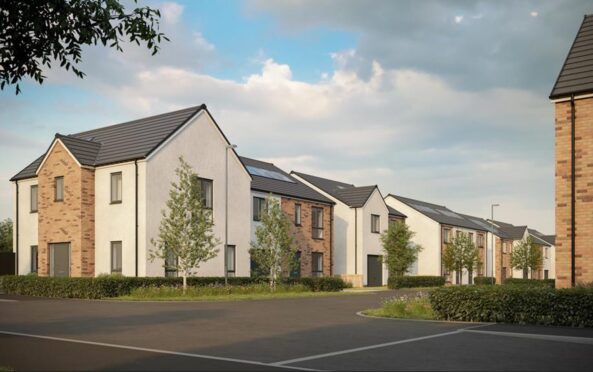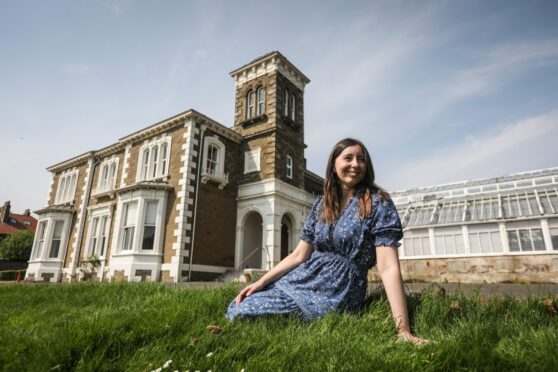Balintore Castle, in the heart of the Angus Glens, has been rescued from ruin by the hard work, ambition and determination of one remarkable man. Jack McKeown tours what must be Scotland’s most incredible renovation project.
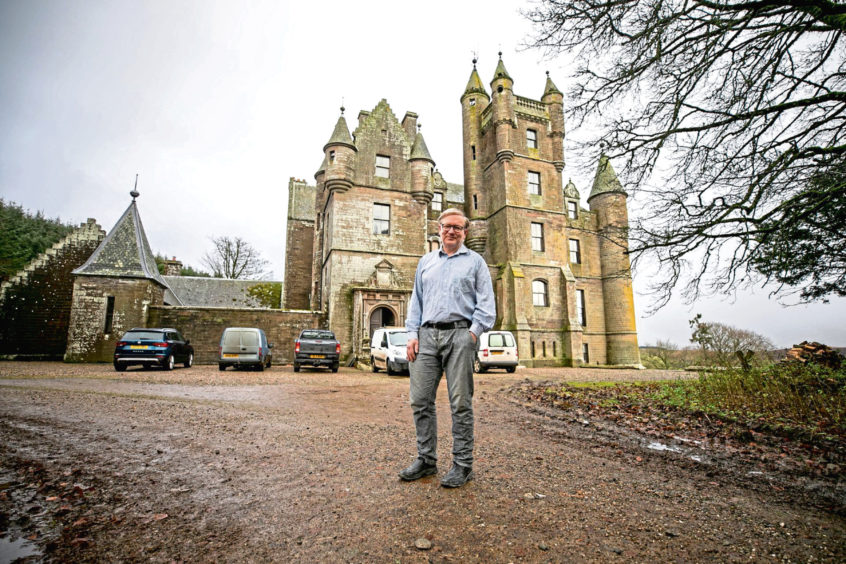
It was seven years after Dr David Johnston bought Balintore Castle before he stopped finding new rooms.
“I was on one of the upper levels and the floor collapsed beneath me,” he recalls. “I fell through and caught myself on the joists. As my legs were dangling and I was feeling like a cut rate Indiana Jones I looked down to the floor below and realised I’d never been in that room before. Once I freed myself I headed down the stairs to explore it.”
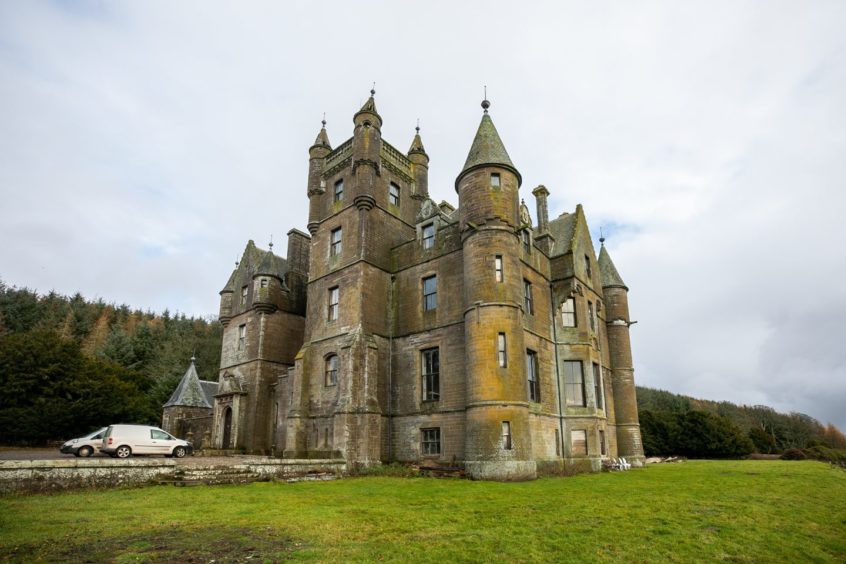
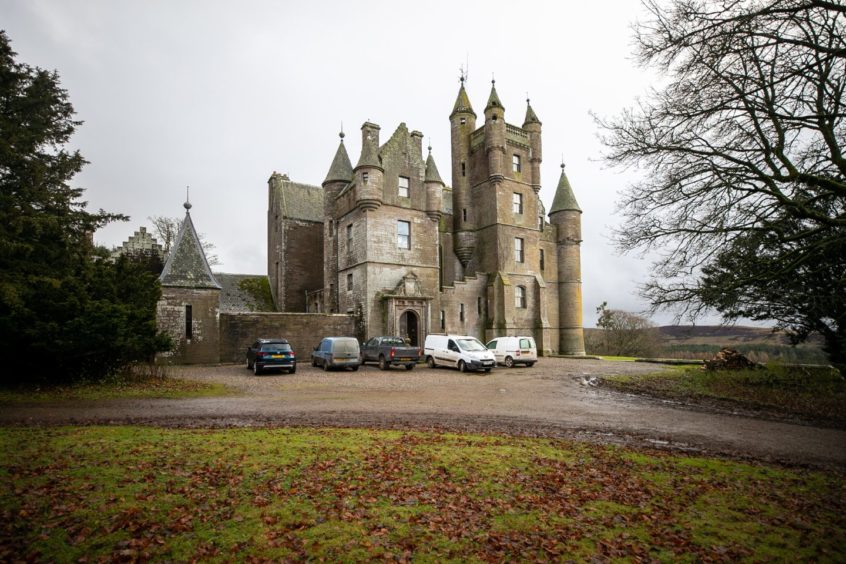
At one point David was discovering new rooms at a rate of one every few days – all told there are 85 of them.
The story of David Johnston and Balintore Castle is one of the most remarkable tales of restoration anywhere in Scotland. Built in 1860 and empty since the 1960s, the Scottish Baronial castle had fallen into dilapidation by the time David acquired it 13 years ago.
Had he not done so, the baker’s dozen of winters that have passed since then may well have seen it degrade beyond all possibility of rescue.
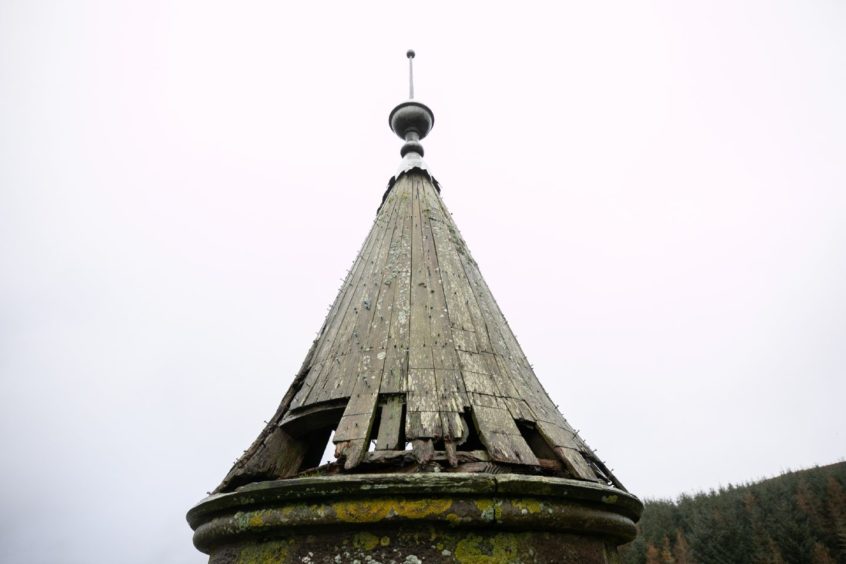
That would be an appalling shame, I think to myself, as I’m afforded my first glimpse of its magnificent turrets and spires.
Nestled in the Angus glens a few miles north of Loch of Lintrathen, the castle’s approach could almost have been designed to showcase its grandeur. It’s a beautiful blue-sky morning when I visit and its silhouette leaps into view once I round the shoulder of a small hill.
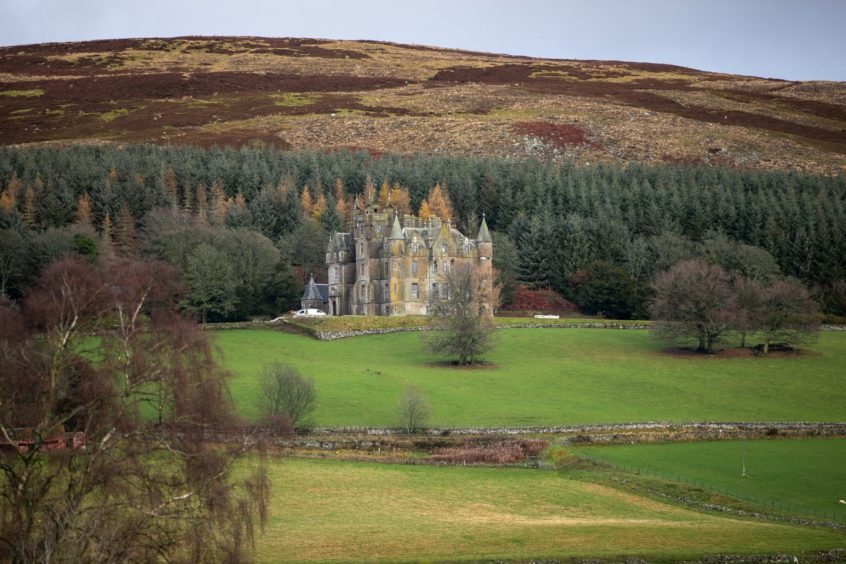
With a wooded hillside as its backdrop and the sweep of Glen Isla laid out before it, the setting is almost as magnificent as the building itself.
I mistakenly overshoot the main driveway and take the secondary driveway – which is in much worse condition. Thankfully I’m driving an SUV, which copes with the mud and ruts, and the error at least allows me to see two charming ruined gatehouses that guard the easternmost end of the castle’s grounds, which I might otherwise have missed.

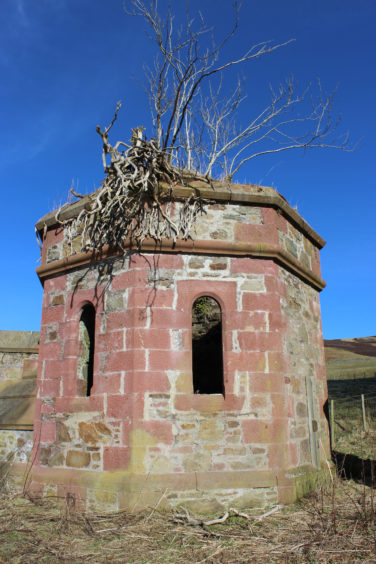
David greets me warmly at the front entrance. The software engineer bought the castle in 2007 for £80,000 after it had been uninhabited and attacked by the elements for six decades.
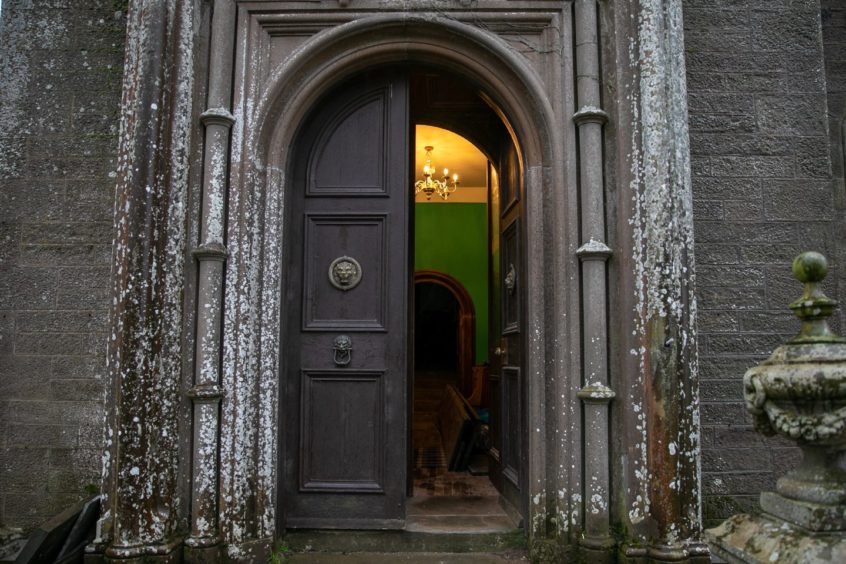
The A listed castle is the work of William Burn, one of Scotland’s finest 19th Century architects, and a pioneer of the Scottish Baronial revival. Among his works are Dalyell family home The Binns in West Lothian; Dundee’s Camperdown House; Dundas Castle; Madras College in St Andrews; Cliveden in Buckinghamshire; and Bangor Castle in Northern Ireland.
Balintore Castle may not be among his most famous works but it should be much more highly regarded, especially given its majestic setting – and it certainly doesn’t deserve to be left to ruin.
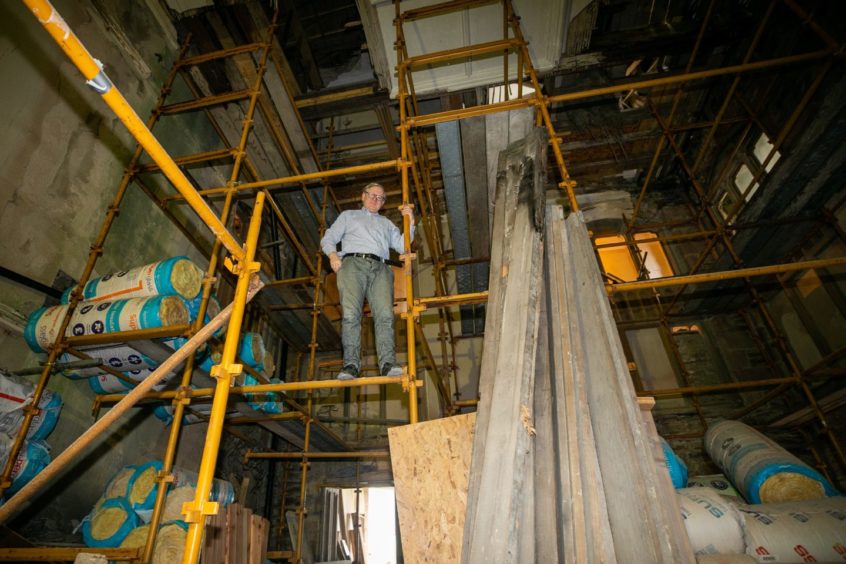
The great hall measures 35 feet by 28 feet, with a ceiling that soars 28 feet above. Its huge windows are mostly boarded up, and the hallways from the two floors above look down through a latticework of scaffolding onto what must in its pomp have been a grand and wonderful space.
Bringing it back to life will be the biggest of the many enormous challenges David has taken on.
“You could easily spend £1 million restoring this one room alone,” David reckons. “I’m hoping to do it for £100,000.”
He has set up a crowd funder to help raise the money to restore the great hall, which has so far raised around £3,800.
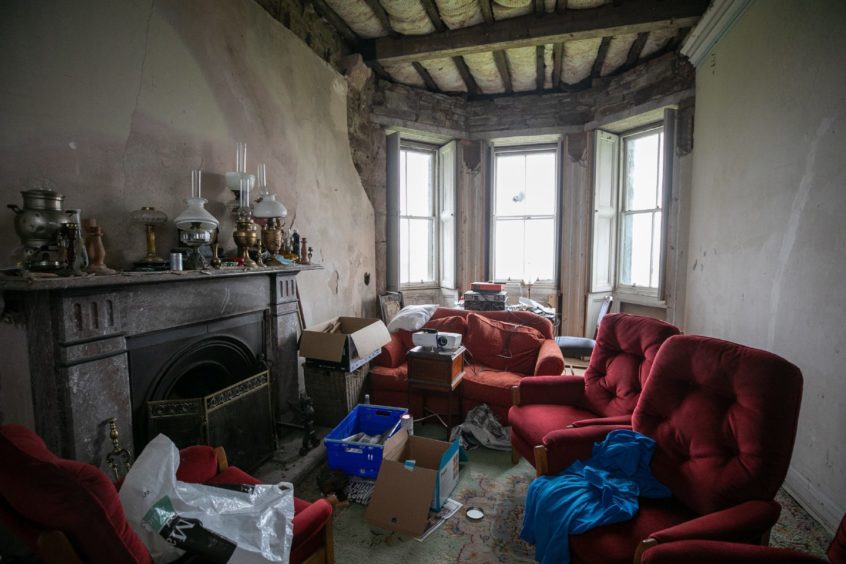
The scale of the undertaking can scarcely be comprehended. Every one of the castle’s 85 rooms is a major project in itself. Even getting the building wind and watertight was a task of huge magnitude.
I can only imagine how insurmountable the task must have seemed when David first received the keys to Balintore. Even 13 years on the majority of the castle remains a building site.
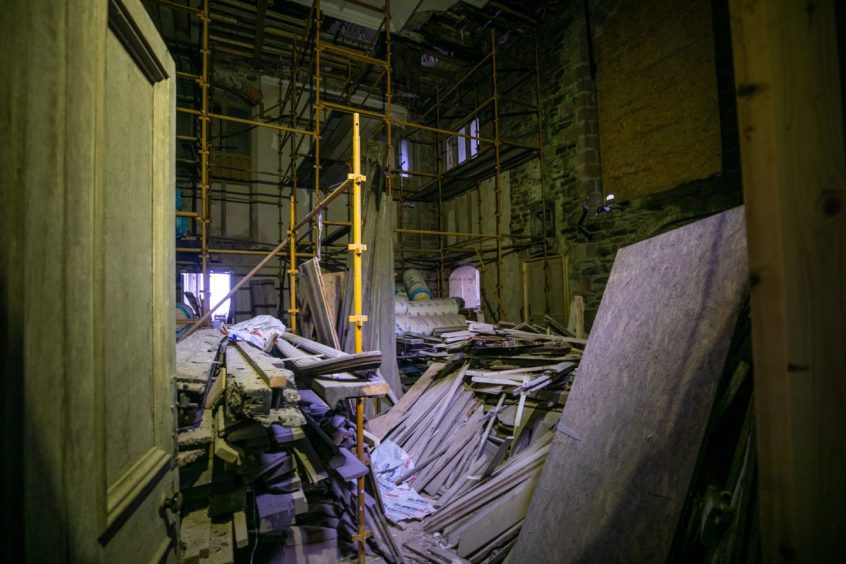
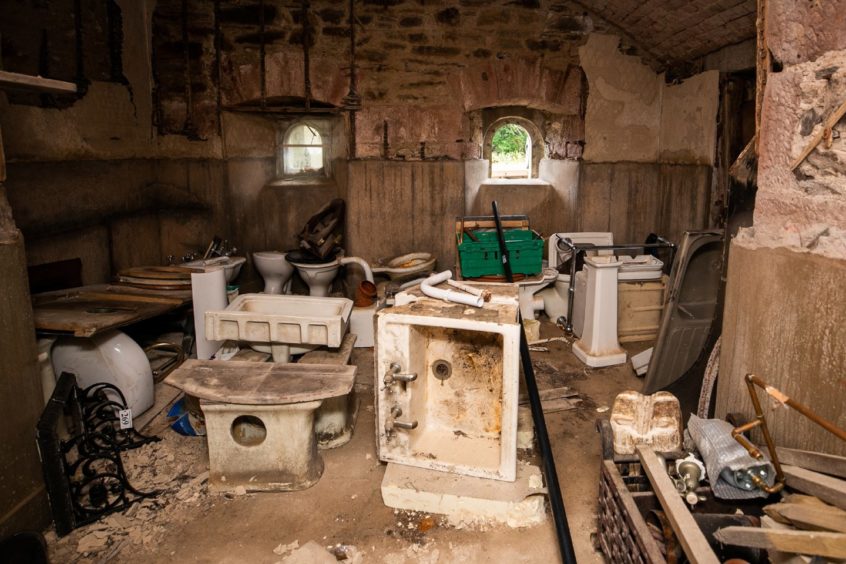
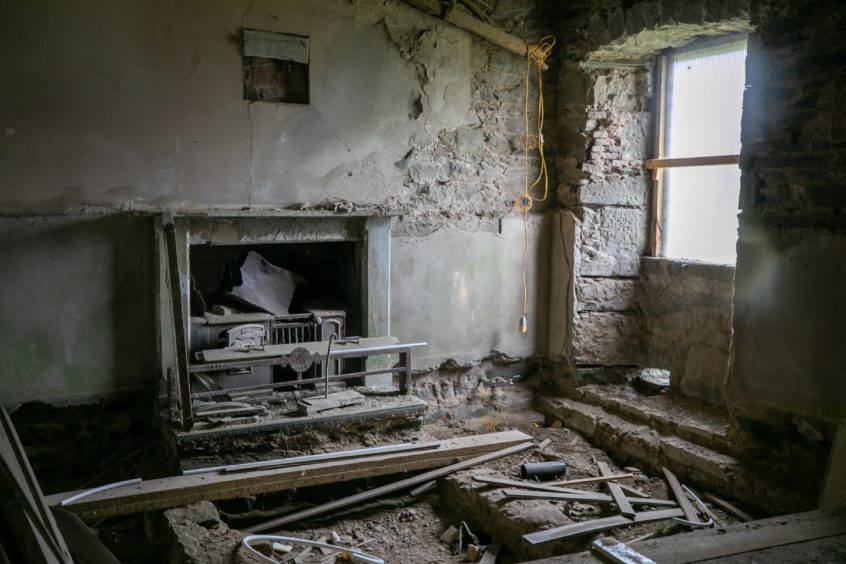
A computer programmer, David works hard to keep ahead of payments to the father and son joiner-and-builder team that work more or less full time on the restoration. When he isn’t doing his day job he’s hands on working alongside them, or travelling the length and breadth of the country to pick up materials.
David is full of praise for his tradesmen. “Gregor’s been here for around seven years and Greg for around three years. They’re both exceptional. A project like this isn’t like any other job. They’ve had to problem solve and learn lots of new skills. Greg has discovered a real talent for plastering.”
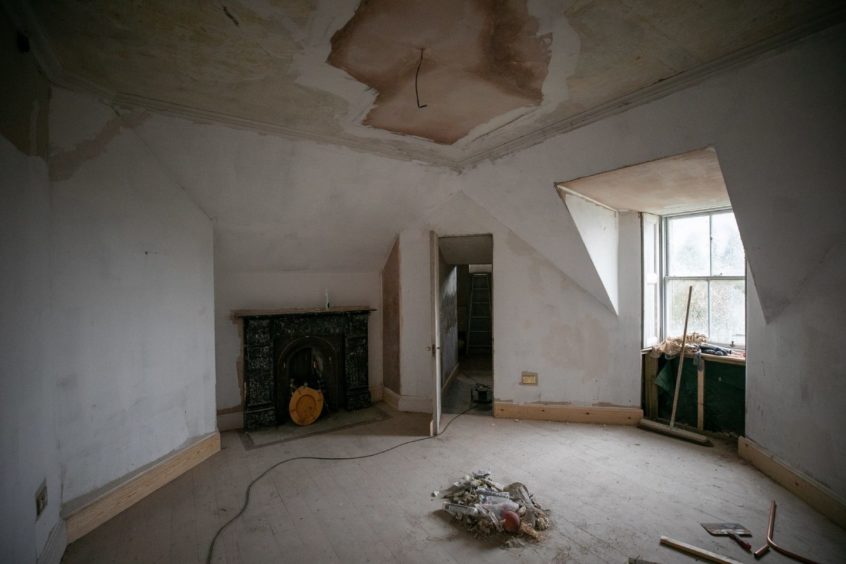
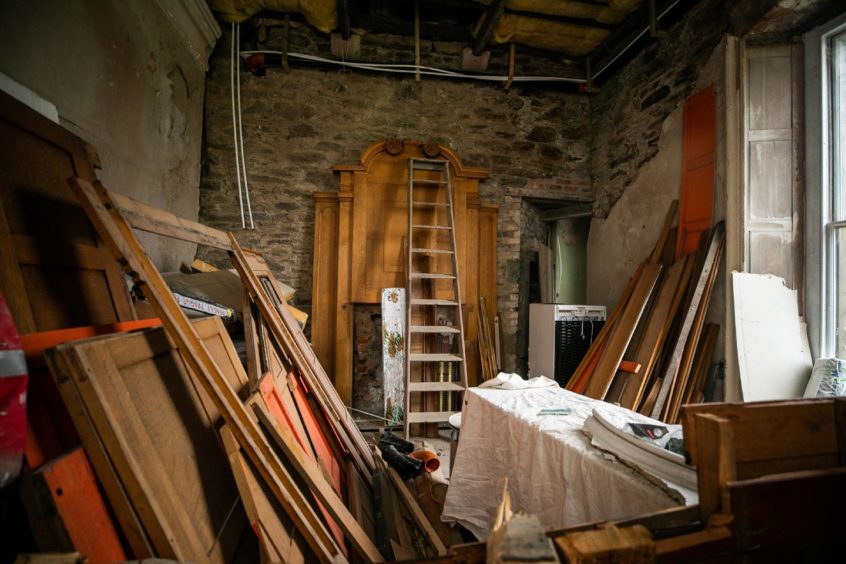
David has been endlessly resourceful and patient when it comes to sourcing materials and furnishings for the castle. Auctions, thrift stores, car boot sales, classified adverts and more are all scoured. During non-lockdown times he frequently jumps in his pickup truck and ranges up and down the country to collect his hard-found bargains.
Kitchens are made out of cabinets reclaimed from Nottingham Natural History Museum – a brass tab on one cupboard door claims it contains items from the Carboniferous Era – and pulpit and pews were rescued from Lochee Parish Church, which was ravaged by fire in 2017.
During its half century of emptiness the castle was stripped of many of its original features. Amazingly, David has succeeded in tracking down some of these and restoring them to their rightful place.
A tipoff from one of the project’s many supporters alerted him to two stone urns that once stood proudly above the castle’s main entrance, which were due to be sold at a Perth auction house. After some negotiation, David was able to buy them and they are now back where they belong.
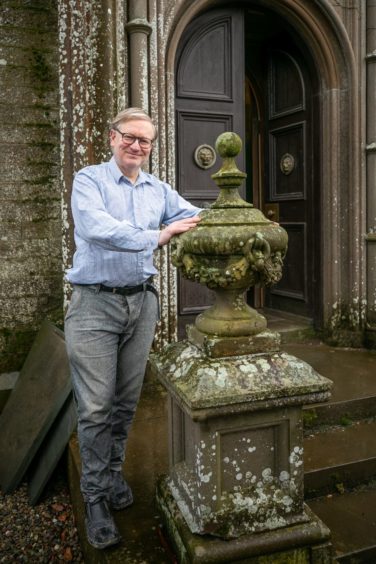
Last summer, an original bathtub from the castle was rescued after more than 50 years serving as a cow trough in a local farmyard.
David won’t disclose how much money he has spent renovating Balintore Castle over the dozen years he’s owned it. Even with his thrift and talent for sourcing a bargain it must be an astronomical sum. “I paid £80,000 for the castle itself, that’s a matter of public record,” he says. “But really the castle has a negative value. It will cost more to restore it than it would ever be worth.”
It’s certainly a joy to explore. I love old buildings and touring one as remarkable as this one is a real treat.

We make our way up a narrow set of winding stone stairs onto the roof. From here the views are spectacular, from the wooded backdrop behind us through the sweep of the valley with Lintrathen Loch glittering like a jewel and, closer, a pond and boathouse that must once have been part of the castle’s estate.
The weathervane on the roof was connected to a dial in the great hall by a long metal rod that ran the full height of the building and let those inside know which way the wind was blowing without having to leave the fireside warmth.
The castle is full of these marvels of Victorian engineering. In the wing that has been completed there’s a cast iron door set into the wall above the fire. This would once have held a mechanism that was turned by convection from the fire – much as a stovetop fan is powered by the heat from a wood burner. This would turn a spit holding a leg of lamb or side of beef, making sure the meat cooked evenly.
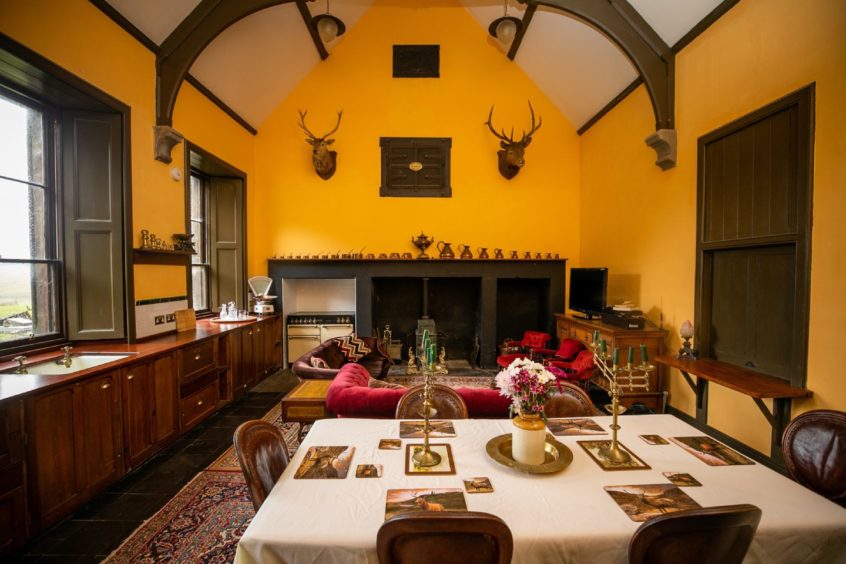
Even the basement levels are special, with barrel ceilings and a strongroom protected by a solid metal door that must once have held the castle’s treasures. David hopes to turn this level into a restaurant one day, and the vaulted ceilings would certainly make a fantastically atmospheric backdrop to enjoy a meal.

The bedroom where David sleeps has a writing area in its turret, which is where David does much of his work from. It’s at this time of the year that he’s required to be at his hardiest and most resilient. “I’ve got a fan heater in here and during the winter that’s just about enough to keep me alive, but not much more,” he smiles.
Does he ever wish he had never taken such an endeavour on? He pauses: “I was once woken up at 5am by what was, essentially, a waterfall in my bedroom. That was a low moment. But then you wake up the next morning and get started on that day’s project and your enthusiasm comes rushing back.”
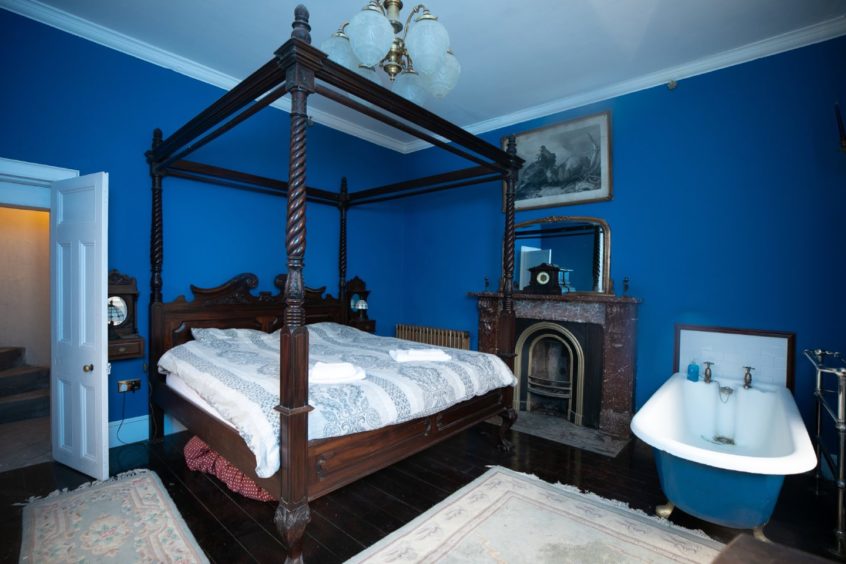
It takes more than two hours for David to show me round the castle, and even then I’m not sure if I’ve seen all 85 of its rooms. Encouragingly, some of them are now complete, while others are well underway. Some are used as storerooms – there’s a room full of bathroom fittings, several rooms for furniture, a room for antique light fixtures, even a room filled with mounted stags’ heads.
In the eastern face of the castle is a huge hole where an impressive oriel window once jutted out before it collapsed more than two decades ago. The hole has been made wind and waterproof but restoring the window will be an expensive undertaking that David has very much put on the back burner.
What made him want to take on such a seemingly impossible project in the first place? “My parents both died and I thought to myself, what do I want to do with my life? I decided I wanted to rescue an old building. I got a list of the Buildings at Risk register.
“I looked at properties in France – but my French is terrible – and in England. I nearly bought a ruined tower in Aberdeenshire but the seller pulled out at the last minute. I saw Balintore but initially thought it was much too big a project, however eventually I was convinced to go for it. If I’d bought the tower house it would have been completed years ago. In all likelihood I will never finish restoring Balintore Castle.”
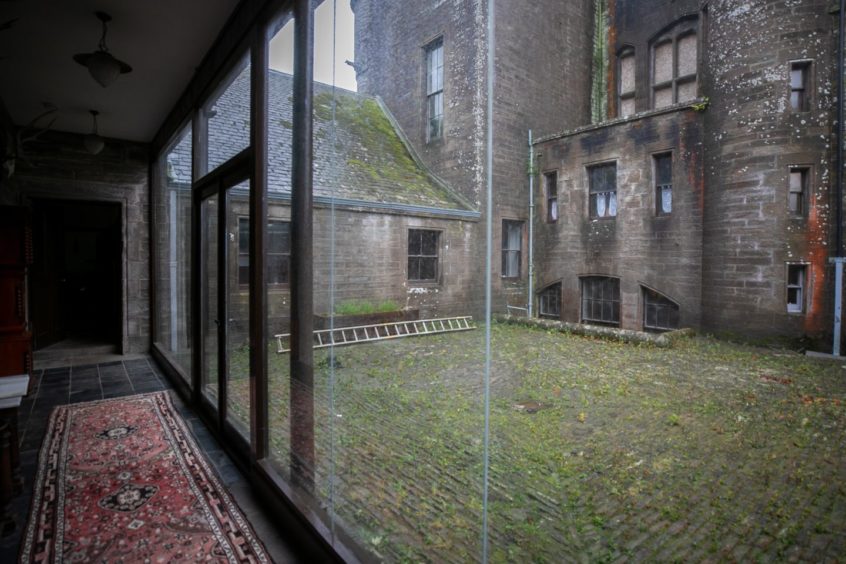
The kitchen wing of the castle is now complete and has been operating as a holiday rental through Airbnb since July 2019. Three more rooms running up one of the towers are also finished and David intends to rent these out once Covid restrictions are lifted.
In time, the two ruined gatehouses that stand at the foot of the castle’s eastern drive may also be converted into charming holiday rentals. Together the combined income streams from these letting units might just allow David to achieve what once seemed impossible – completing the restoration of Balintore Castle within his lifetime.
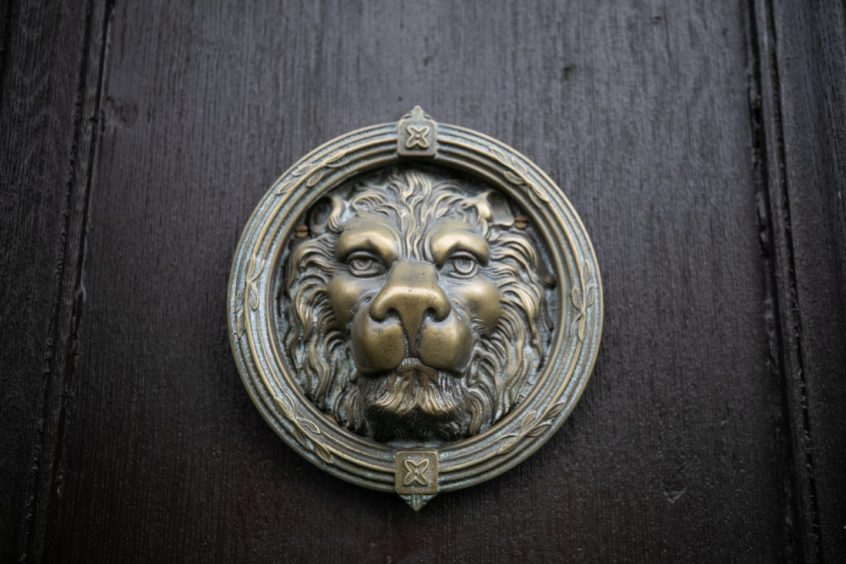
During our tour David made a self-deprecating joke about feeling like Indiana Jones when he discovered a new room by almost falling into it. Yet there is something almost heroic about one man of modest resources taking on a project that would make even wealthy tycoons quail.
As I set off down the driveway and the castle diminishes in my rear view mirror I can’t help but hope he succeeds.
uk.gofundme.com/f/restore-the-great-hall-at-balintore-castle
